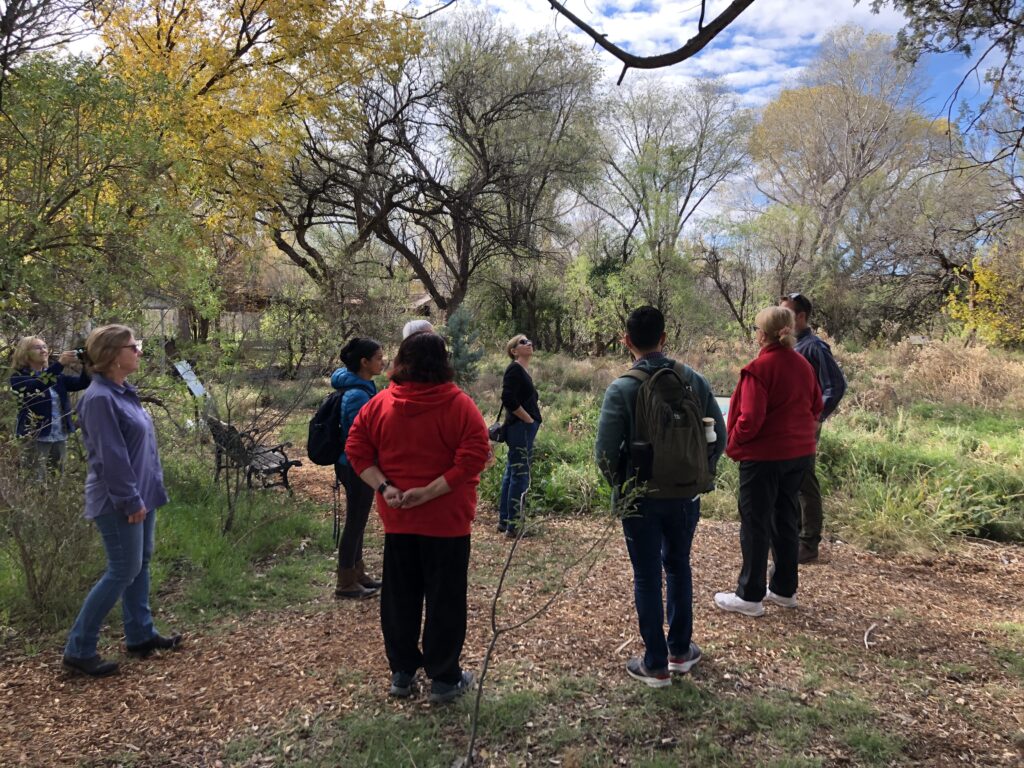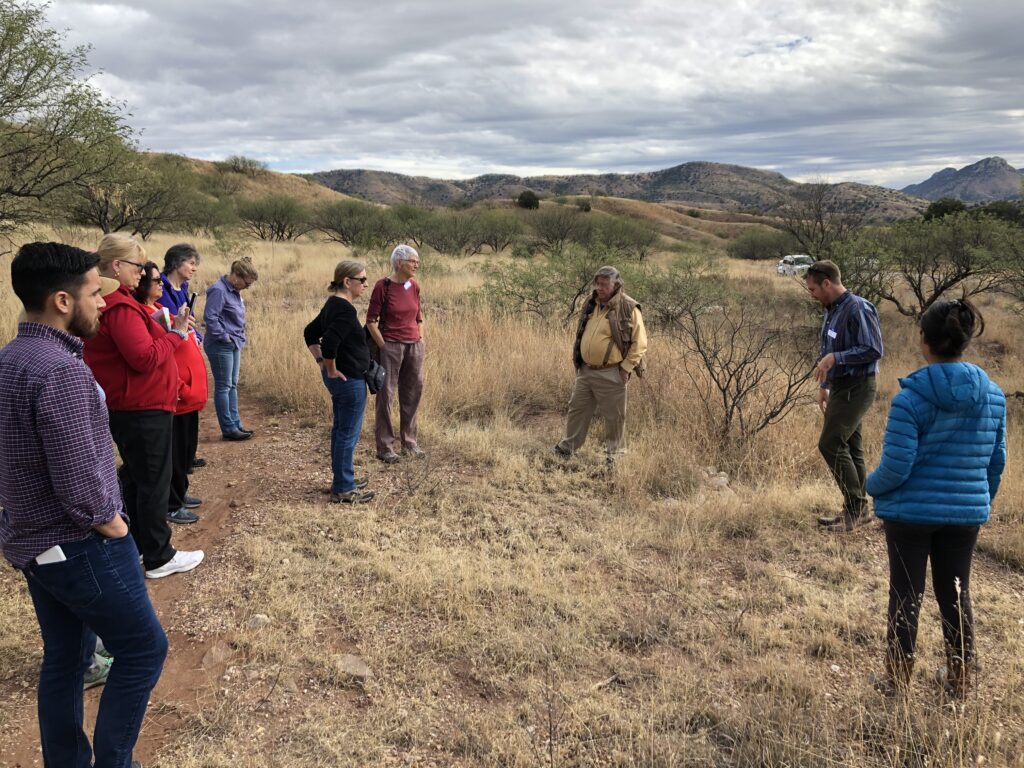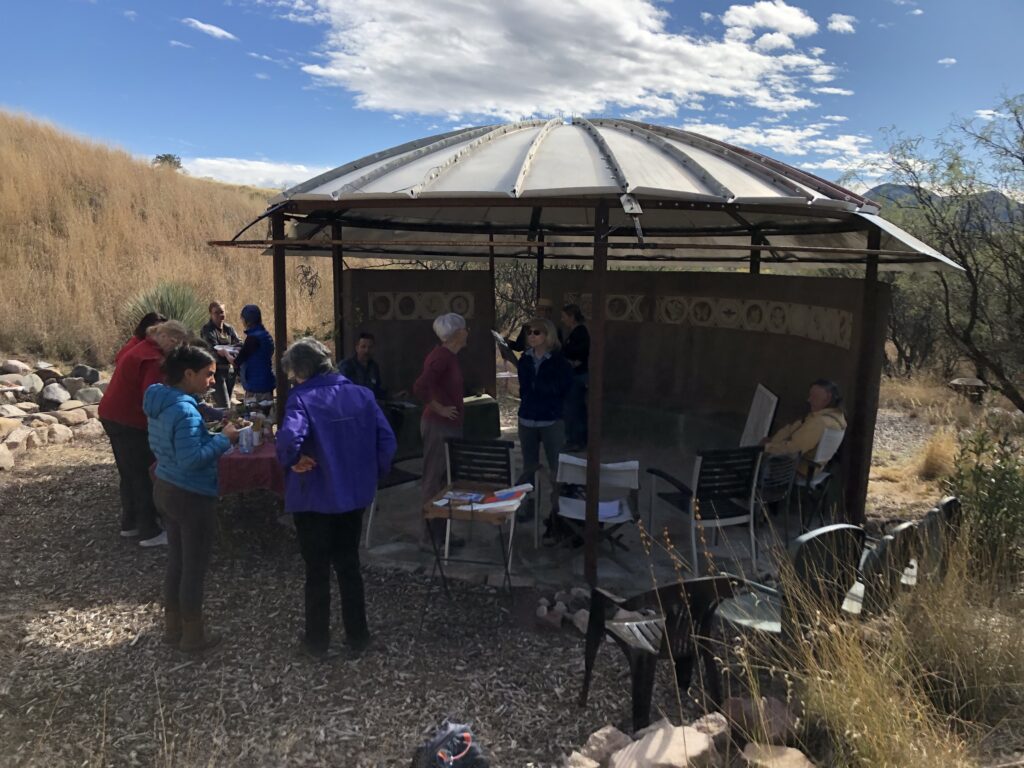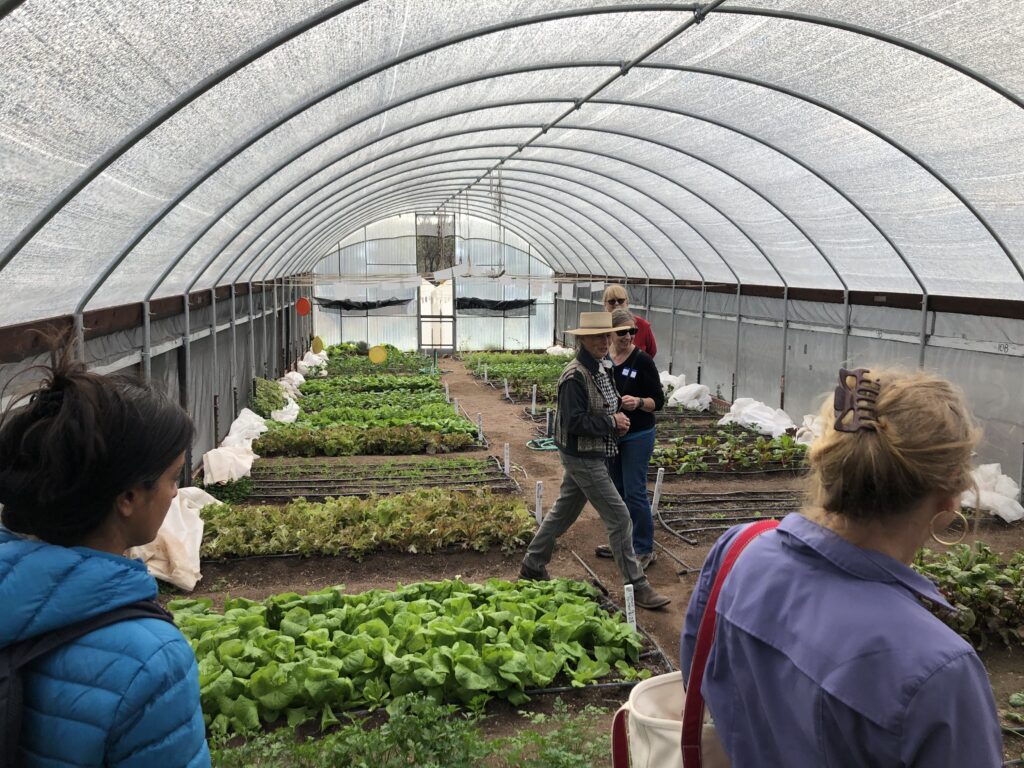
NCEL Events
Conservation Tour with Borderlands Restoration Network
Saving the environment can often seem like an unachievable task. How can we possibly reverse the degradation humans have caused? The Borderlands Restoration Network (BRN) based in Patagonia, Arizona has found a solution they believe could be replicated in other areas of Arizona and across the nation. They have found success in reversing ecological degradation from development and resource extraction in the borderlands region through understanding and restoring the natural systems their environment depends on.
On December 4, NCEL organized a tour of BRN’s efforts for Arizona state legislators Senator Andrea Dalessandro and Representative Rosanna Gabaldón. We were also joined by Barbara Baker, Vice Chair of the Washington Fish and Wildlife Commission and Harriet Allen, the former head of the WDFW Endangered Species Division. Patagonia is a town just north of the border with a population of under 1,000 and a wide array of natural landscapes and wildlife. Recognizing the need to restore the ecology of the borderlands region, BRN began their work in 2012 and have had great success. Our tour on December 4 showed us these successes first-hand.
Tucson Audubon’s Paton Center for Hummingbirds
Our first stop on the tour was at the Tucson chapter of the Audubon Society’s Center for Hummingbirds. BRN’s Director Kurt Vaughn led a discussion of the importance of bird watching and pollinators in the borderlands region. The hummingbird center has nearly 18,000 visitors a year and around 213 bird species have been reported there.

BRN also discussed the importance of pollinators to the region. More than 600 species of native bees, 300 different butterflies and moths, 14 types of hummingbirds, and 2 nectar-feeding bats are found around Patagonia. At the Center, BRN told us about the benefits of the ecotourism centered around the diverse birds and wildlife of the region, as well as some of the major threats to ecotourism including mining and fracking. A focus of BRN is highlighting the economic benefits of their restoration efforts.
Borderlands Wildlife Preserve and the Watershed & Habitat Restoration Program
We then took a driving tour of the Borderlands Wildlife Preserve where BRN has purchased hundreds of acres of land that was going to be developed in order to protect it. We saw first-hand how BRN has successfully restored a local watershed. The physical processes of watersheds are brought back to life using rock structures to slow the flow of water and stabilize creek beds, increase infiltration, and allow sediments to accumulate. BRN has built over 500 of these rock erosion control structures in more than 30 different locations in the borderlands region. They also have a successful watershed restoration program south of the border. A lot of BRN’s work has been made possible by engaging local students through their Borderlands Earth Care Youth (BECY) program. BECY has had 133 youth complete their program which provides a pathway to pursue careers in ecological restoration, while instilling an appreciation of the natural world.

Deep Dirt Institute
Following the wildlife preserve tour, BRN took us to their network partner the Deep Dirt Institute. Deep Dirt aims to inspire and educate individuals and their communities in living in resilient and regenerative ways. They do this through touring their 34-acre farm which has examples of water harvesting, erosion control, native plant restoration, and food production. In addition, they provide hands-on demonstrations of permaculture approaches aimed to restore land, communities, and people. Every year students from all over the world come to Deep Dirt to learn permaculture. On the Deep Dirt Farm, we ate a locally-sourced lunch and toured the many restoration projects at the farm. We followed up lunch with a discussion of ways legislators and other policymakers, BRN, and NCEL can all collaborate and work together on important restoration work in Arizona and elsewhere.

BRN Native Plant Nursery
Our final stop of the day was at BRN’s Native Plant Nursery. The nursery is part of BRN’s Native Plant Material Program which works to promote and protect biodiversity and ecosystems in the border region by providing access to restoration-quality native plant materials. We saw the process by which BRN helps to protect and propagate native plant species, including endangered species for pollinators and corridor habitat in the region.

This process includes growing native plants from seeds in their greenhouses, planting them in local watersheds, selling plants locally, and maintaining a database of native plants. The nursery sold over 20,000 native plants in 2019. We were also fortunate enough to see the BRN Native Seed Lab which coordinates native and endangered seed collection and cleaning services.
Tour Takeaways
Our trip to Patagonia to tour the Borderlands Restoration Network’s efforts was both informative and inspirational. We got to see first-hand examples of simple, yet highly effective, ways to restore the ecology of a region that could be replicated in other areas across the nation. Other regions could also learn from BRN’s approach to restoration and view that communities and the environment can both thrive together.
If you are interested in learning more about the restoration efforts of the Borderlands Restoration Network or would like to schedule your own tour then contact BRN’s Director Kurt Vaugn or NCEL’s Senior Advisor on Conservation, Ruth Musgrave.